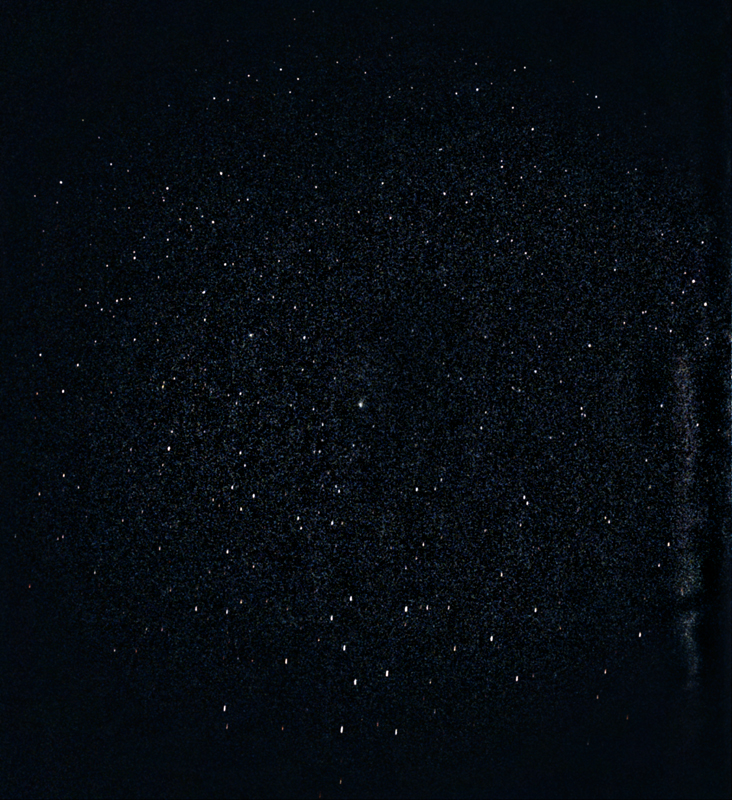
Comet Austin 1989c1. February 25, 1990.
15 minutes exposure, Konica 3200 film.
6" f/3.75 schmidt-newtonian at prime focus.
Comet Austin 1989c1 was discovered by New Zealander Rod Austin on December 6, 1989 as an 11th magnitude object. Although it did not reach the brightness of some of the early predictions, it still became an easy naked-eye object, particularly during May as it drifted relatively close to the Earth following perihelion.
For several reasons, I was unable to observe this comet until February 15, 1990 when it appeared as a magnitude 8.0 object with a very well condensed 7' coma. Two tails, 35' and 45' in length were visible in a 10" telescope. The comet brightened rapidly as it approached perihelion, reaching magnitude 5.5 on March 7, which was my final pre-perihelion observation before it was lost in the evening twilight. By this time only one faint, 20' tail was visible.

Following perhelion, my first observation was during the pre-dawn hours of May 8. On this night the comet was an easy naked-eye object of magnitude 5.1. The coma showed a very strong central condensation and a large, faint outer coma that made magnitude estimations very difficult. With a 10" telescope, a very faint 35' tail was visible. The comet brightened slightly as it approached the Earth, reaching a peak brightness of 4.8 on May 23. The coma became very large, reaching 20', still with a very strong central condensation. The tail also became longer although it remained very faint.
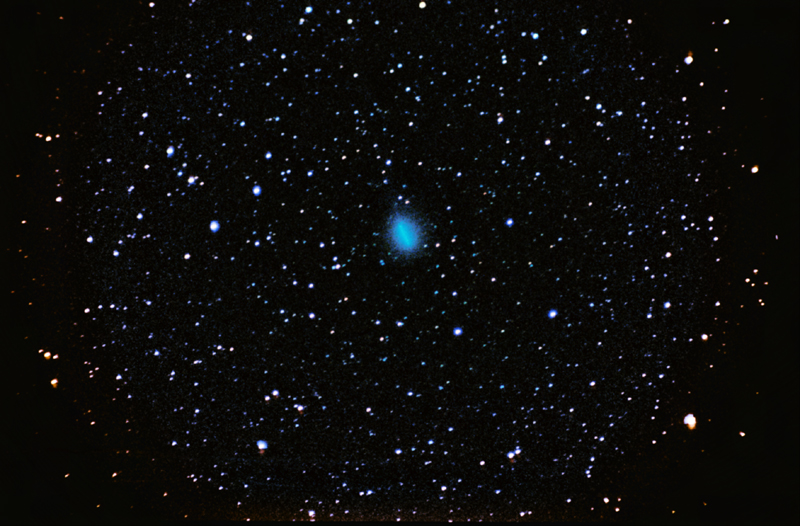
On this night the comet was an easy naked-eye object of magnitude 5.0 with a 16' coma. In a 10" telescope, a very faint tail almost 1 degree long was visible. The comet also displayed a very strong central condensation. The rapid motion of the comet is easily seen. In this image, the telescope was tracked on the stars, and the comet's motion during the 15 minute exposure caused it to trail.
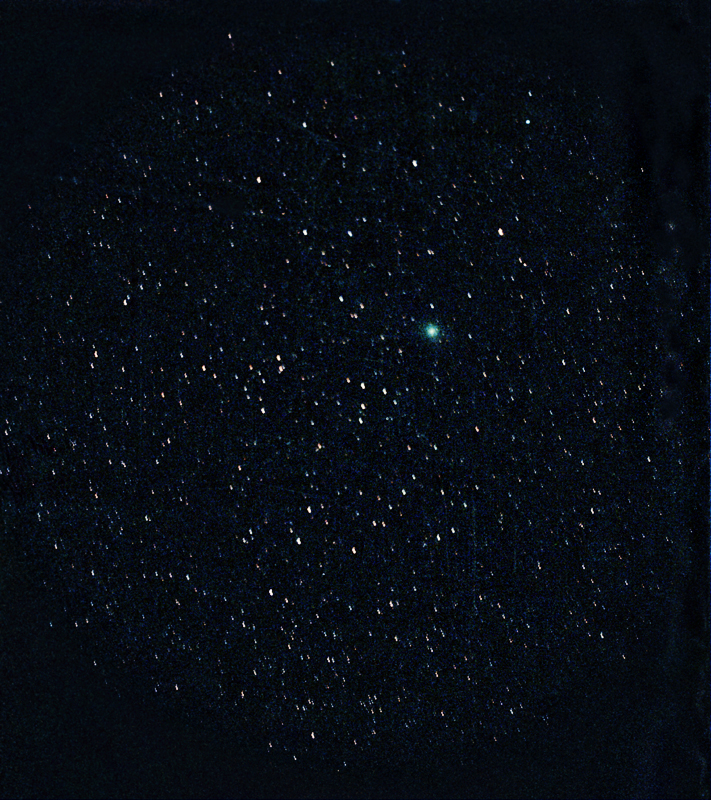
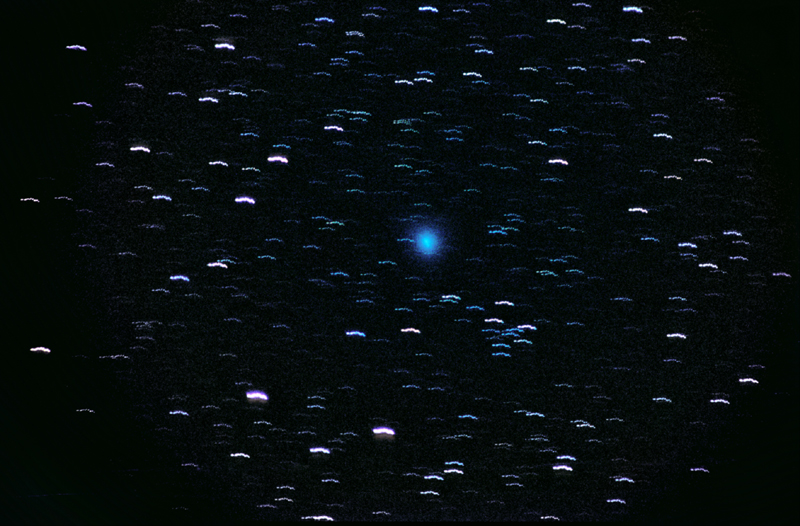
Comet Austin 1989c1. May 21, 1990.
15 minutes exposure, Fujichrome 400 film.
6" f/3.75 schmidt-newtonian at prime focus.
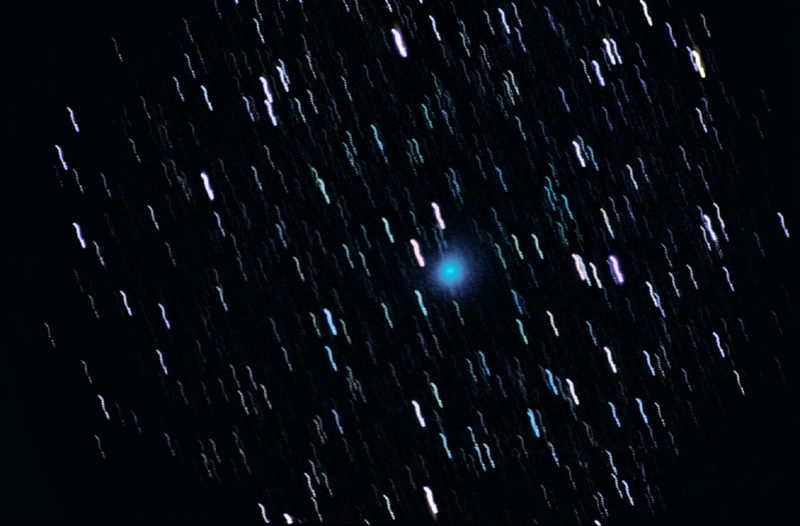
Comet Austin 1989c1. May 24, 1990.
30 minutes exposure, Fujichrome 400 film.
5" f/5 refractor at prime focus.
After the comet passed the Earth, it began to fade quickly, however before it disappeared, comet Austin put on one last unexpected display. In early June several favourable circumstances combined to increase the brightness and length of the tail dramatically. What happened was the Earth crossed the plane of the comet's orbit in early June, which helps the visibility of any dust tail. But at the same time, the comet was at opposition, which meant that we were looking at the greatest depth of tail particles and at the same time, the small phase angle meant that backscattering of sunlight, brightened the particles considerably. As a result, 2 tails were visible during early June, with the brightest being 2.5 degrees long. Also between June 2 and June 4, a moderately bright anti-tail almost 20' in length, was also visible.
Following this display, the comet faded rapidly as it receeded into the depths of space, possibly on a slightly hyperbolic path, meaning it would never again return to the inner solar system.